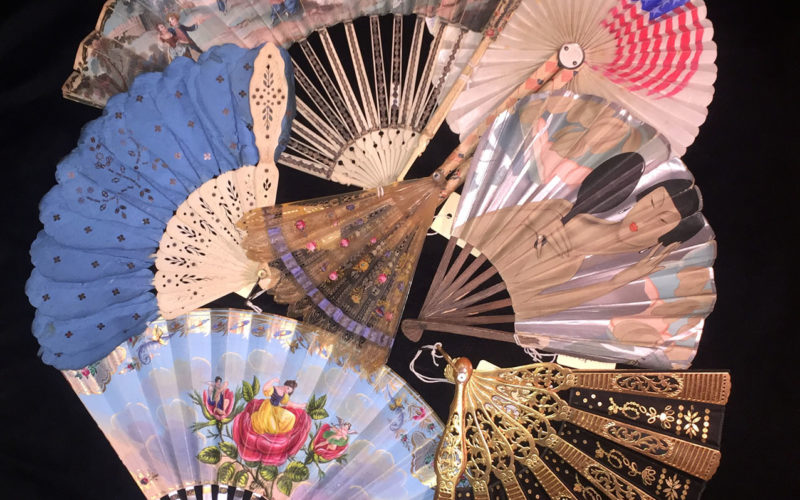Unique pieces of the past on show at Shiloh Museum
BECCA MARTIN-BROWN
bmartin@nwadg.com
It sounds like an introduction to a segment of “Mysteries at the Museum”:
They’re small, simple to store, easy to display. They can date back to the Greeks, Etruscans and Romans but saw their heyday in the Victorian era. Although some are pricey — like $20,000 to $30,000 pricey — many are affordable to collect. And each is one of a kind, a portable work of art that can be held in the hand.

Photo courtesy Debbie Weddle
Italian Grand Tour fans like this one from the late 1700s illustrate the famous sites of Italy and were popular souvenirs for travelers.
Those are just some of the reasons that Debbie Weddle of Fayetteville is a fan of folding fans, waxing eloquent on their beauty, their historical value and their role as both status symbols and cultural barometers. It was not a position she expected to find herself in. Weddle was not raised to be a collector, and folding fans are in fact her first collection.
“I’m not a sentimental person,” she says. But she is educated as an anthropologist, so it’s the history of folding fans that captured her attention. “It’s becoming a caretaker for the next person who might own them,” she says. “One of my oldest fans dates from about 1710, and I feel like it’s survived so long, I have an obligation to help it survive even long. It’s obviously a treasured object. So I guess that is sentimental.”
Fans first came to Weddle’s attention on a New England vacation about 15 years ago. She walked into an antiques store, she remembers, and saw a Civil War-era folding fan.
“It was fascinating to me that I could own that,” she says. “That it had survived so many years and wasn’t in a museum.
“After that first fan, I did a little bit of research, but I didn’t really start collecting seriously until I joined the Fan Association of North America,” she goes on. “The knowledge the members provide is just vast. They have publications and scholarly journals, and I started to read about fans from the 1700s all the way through the Art Deco era. …
“When I started out, I wanted to collect only 18th century European fans — the kind Marie Antoinette would have carried — in part because they often have mythological subjects on the leaves, and I love mythology. But some of those fans can be very expensive and not in my budget — although I do have a few very nice ones I’ve stumbled upon. But then I started to branch out into Art Nouveau, and now I’m really into Art Deco with advertising graphics. One of the great things about fans is if I get tired of one kind, I can find something else. There are people who collect nothing but funeral home fans — a college professor has even written papers on it!”
While Weddle treasures the age of a fan first, she says she still wants it to be pretty or “interesting in some way,” so you won’t find her collecting black-on-black mourning fans. Her favorite pieces change from day to day — as do her displays, so as not to damage the fans with sunlight or dust — but perhaps her most treasured is an Italian Grand Tour fan from about 1790. Brought home as a souvenir from someone’s sojourn in Naples, Italy, it includes handpainted vignettes of Roman ruins and Mount Vesuvius erupting.
“They’re very rare, and I was very lucky to find it for the price I did,” she says. “So I’ll be content with my one. Probably.”
Weddle will share some of her fans at the Shiloh Museum’s annual Cabin Fever Reliever Collectors’ Day Jan. 12, but she adds she loves to talk about fans to any interested group. (Contact her at vintagefansfan@gmail.com.)
“They’re kind of a niche thing, but I really think they should be appreciated a lot more than perhaps they have been.”
__
FAQ
Cabin Fever Reliever
WHEN — 10 a.m.-2 p.m. Jan. 12
WHERE — Shiloh Museum of Ozark History in Springdale
COST — Free
INFO — 750-8165
BONUS — Also slated to be shown are small and miniature pitchers; woodcarvings; bowling collectibles; Christmas albums; crocheted ornaments; fairy lamps; turtles (both collectibles and live!); cat collectibles; single-use kitchen utensils; coins; rocks and oddities; Belleek pottery; and buttons.



